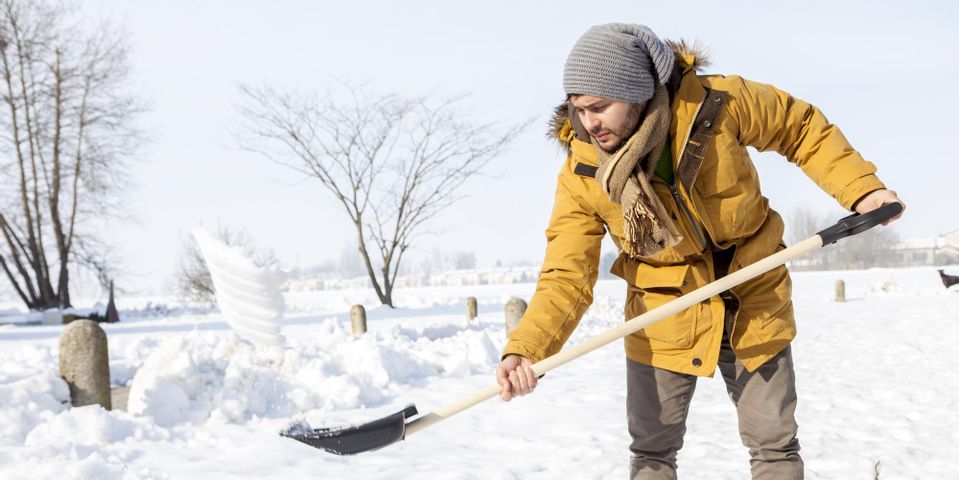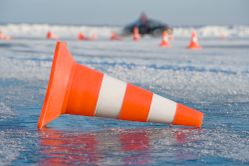
When you see snow and ice, your first thought may be how cold it is outside. However, the cold temperature shouldn’t be the only factor to consider as you face winter weather. For your safety, it’s also important to consider how these elements can increase your risk of slipping and falling, which in turn, can cause severe musculoskeletal injuries. To help you avoid the back pain, shoulder stiffness, immobility, and muscle soreness that can come with winter weather-related injuries, here are five physical safety tips you can practice.
5 Injury Prevention Tips to Practice This Winter
1. Stretch Before Any Physical Activity
Whether you’re getting ready to ski down the slopes or shovel a driveway of snow, you want to make sure your muscles and joints are prepared for the activity. By stretching out all muscle groups beforehand, you can help loosen tissues to make them more flexible and thus less susceptible to back pain or other injuries.
2. Prioritize Visibility
 Snow-covered stairways and patches of ice on the pavement aren’t always easy to spot. Therefore, make sure your home is equipped with proper lighting to maintain visibility. In public areas, like at your workplace, hazardous areas should be identified with clear and legible signs. If you notice that isn’t the case, address the issue by consulting with your supervisor or someone in HR about the necessity of a sign around the hazardous spot. You can also get proactive and make a sign of your own, cautioning fellow employees to avoid that particular area of the property.
Snow-covered stairways and patches of ice on the pavement aren’t always easy to spot. Therefore, make sure your home is equipped with proper lighting to maintain visibility. In public areas, like at your workplace, hazardous areas should be identified with clear and legible signs. If you notice that isn’t the case, address the issue by consulting with your supervisor or someone in HR about the necessity of a sign around the hazardous spot. You can also get proactive and make a sign of your own, cautioning fellow employees to avoid that particular area of the property.
3. Invest in Proper Footwear
While increased visibility will greatly reduce your risk of having a wintertime accident, many seasonal hazards can still go unseen to the naked eye, especially if you are not paying close attention to your surrounding while in a hurry. If you encounter one of these hidden obstacles, such as a patch of black ice, having the right footwear can help you maintain your stability and avoid injuring yourself. When selecting winter boots, look for pairs that offer solid traction and can maintain a strong grip in spite of snow and ice. Additionally, make sure you also wear the right size shoe, as oversized boots can lead to excessive shifting, which can cause an ankle injury.
4. Use Railings
If you do have to walk around a wet, snowy, or icy area, don’t try to brave the surface without any support. To reduce your fall risk, always travel over these areas while keeping a sturdy grip on railings and other stable support resources.
5. Lift & Carry With Caution
If you’re shoveling snow or hauling in supplies from your car, make sure you practice proper lifting and carrying techniques. To maintain stability, never carry more than you can handle or lift objects that may impair your balance. To prevent back pain, especially in your lower back, lift with your knees and lower legs, rather than relying on your hips and upper body for strength.
In the event of an accident, seeking proper treatment can help you avoid a life altering injury or long-term pain. That’s why Rosemount Chiropractic Clinic offers a wide variety of natural, non-invasive rehabilitative therapy options to patients in the Greater Minneapolis area. Located in Dakota County, MN, this caring chiropractor understands how to accurately pinpoint problem areas and develop customized treatment plans to relieve shoulder and back pain, restore mobility, and prevent secondary injury. For more details on these services, visit this practice online. To schedule a consultation, call (651) 423-2251.
About the Business
Have a question? Ask the experts!
Send your question

